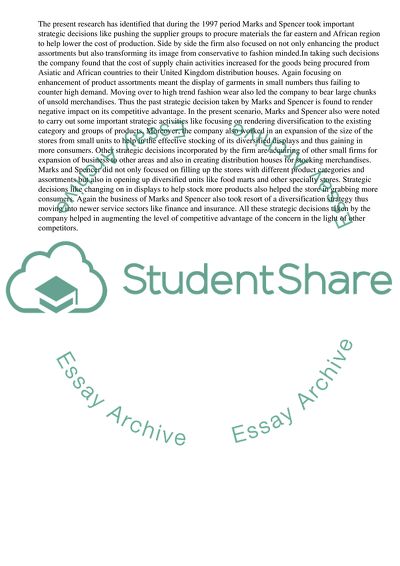Cite this document
(“Competitive Advantage of Marks and Spenser Essay - 1”, n.d.)
Competitive Advantage of Marks and Spenser Essay - 1. Retrieved from https://studentshare.org/management/1591045-critically-discuss-the-basis-of-marks-and-spensers-competitive-advantage-both-past-years-and-present-and-in-doing-so-evaluate-the-change-in-initiative-mounted-in-recent-years
Competitive Advantage of Marks and Spenser Essay - 1. Retrieved from https://studentshare.org/management/1591045-critically-discuss-the-basis-of-marks-and-spensers-competitive-advantage-both-past-years-and-present-and-in-doing-so-evaluate-the-change-in-initiative-mounted-in-recent-years
(Competitive Advantage of Marks and Spenser Essay - 1)
Competitive Advantage of Marks and Spenser Essay - 1. https://studentshare.org/management/1591045-critically-discuss-the-basis-of-marks-and-spensers-competitive-advantage-both-past-years-and-present-and-in-doing-so-evaluate-the-change-in-initiative-mounted-in-recent-years.
Competitive Advantage of Marks and Spenser Essay - 1. https://studentshare.org/management/1591045-critically-discuss-the-basis-of-marks-and-spensers-competitive-advantage-both-past-years-and-present-and-in-doing-so-evaluate-the-change-in-initiative-mounted-in-recent-years.
“Competitive Advantage of Marks and Spenser Essay - 1”, n.d. https://studentshare.org/management/1591045-critically-discuss-the-basis-of-marks-and-spensers-competitive-advantage-both-past-years-and-present-and-in-doing-so-evaluate-the-change-in-initiative-mounted-in-recent-years.


